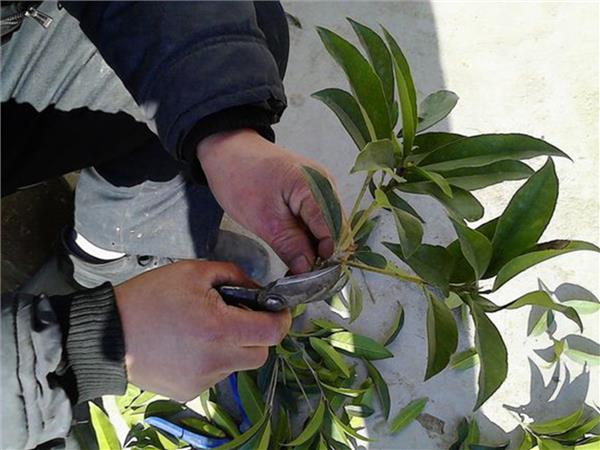How to Graft Osmanthus fragrans time and method of grafting
Osmanthus fragrans grafting can make seedlings grow quickly, grow vigorously, blossom early and have little variation. There are also many methods of grafting, such as relying on grafting, splitting grafting, abdominal grafting, soil-piling grafting and rootless grafting and so on. So how to graft sweet-scented osmanthus? What is the time and method of grafting Osmanthus fragrans.

How to Graft Osmanthus fragrans-- grafting time of Osmanthus fragrans
Grafting sweet-scented osmanthus in early spring is better, and it will be able to determine whether it will survive or not, which is conducive to management. Osmanthus fragrans can also be grafted in autumn, and the survival rate of master grafting is relatively high.

How to Graft Osmanthus fragrans-- grafting method of Osmanthus fragrans
Abdominal connection and abutment are generally used.
① ventral grafting: ventral grafting means that the rootstock is trimmed before grafting. Cut off all the pieces at 6m / m from the soil surface and cut obliquely near the rhizome. Don't hurt the medulla. The scion uses 2 Mel 3 branches (without leaves) and is about 10 cm long. It is suitable for those with 2 Mel 3 sections. Then the ear interface is cut into an unequal wedge and inserted into the cutting of the rootstock to make it close. Bind the soil with plastic or hemp skin to the top of the scion.
② connection: the rootstock is first fed in a basin. During the Meiyu period from June to July, the shoots of two-year-old sweet-scented osmanthus seedlings similar to the rootstock were grafted in a pot, and cut off in front of "White Dew" after survival. That is, the new plant can blossom in the same year.

How to Graft Osmanthus fragrans-- Management in the later stage of Osmanthus fragrans grafting
Osmanthus fragrans can survive and sprout about 20 days after grafting. For unsurvived plants, if the proper time for grafting has not expired, they should be replanted in time.
If the adaptation period has passed, you can choose to leave 1 or 2 new shoots on the rootstock to prepare for replacement next spring.
After the grafted seedlings survived, the cultivated soil should be gently removed and a vigorous and long new shoot should be selected for cultivation to remove the redundant new shoots. The rootstock tillers originating from the rootstock should be removed as soon as possible after the grafting survived. Because the new shoots of rootstock and scion will compete for water and nutrients, which will directly affect the normal growth of grafted seedlings. For example, if the growth of rootstock tiller seedlings exceeds that of scion shoots, it often causes scion "budding" and grafting can not survive.
When the new shoot of the grafted seedling is 15 to 20 meters long, a pillar should be set up to fix it, so as to prevent the wind from breaking or crooked causing the tree in the future.
If the posture is not correct, cultivating the soil in the rhizosphere of the grafted seedling can prevent the grafting interface from splitting.
During the whole growing period of grafted seedlings, attention should be paid to ploughing, weeding, drought and drainage. When the growth of grafted seedlings is more than 10 cm, sparse animal manure should be applied once to promote the growth of seedlings, and then fertilized every other month. The height of one-year-old grafted seedlings can reach 3040 cm in the same year, and the highest can reach more than 70 m. Can be transplanted in the following spring, after meeting the specifications, and then out of the nursery for planting and utilization.
Related
- Wuhan Hospital Iron Tree Blooming Result Was Instantly Frightened by the Gardener Master
- Which variety of camellia is the most fragrant and best? Which one do you like best?
- What is the small blue coat, the breeding methods and matters needing attention of the succulent plant
- Dormancy time and maintenance management of succulent plants during dormancy
- Minas succulent how to raise, Minas succulent plant pictures
- What are the varieties of winter succulent plants
- How to raise succulent plants in twelve rolls? let's take a look at some experience of breeding twelve rolls.
- Attention should be paid to water control for succulent plants during dormant period (winter and summer)
- Watering experience of twelve rolls of succulent plants
- Techniques for fertilizing succulent plants. An article will let you know how to fertilize succulent plants.



